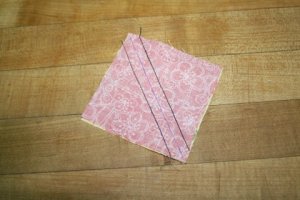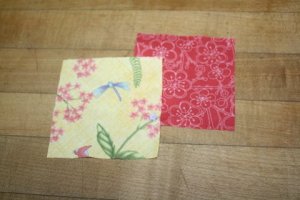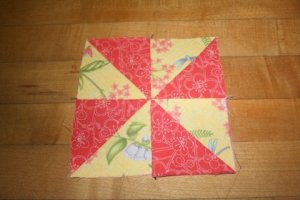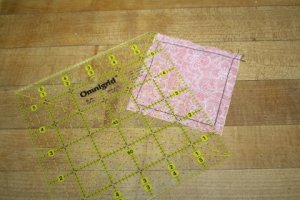One of my favorite quilt tops is a windmill pattern using two fabric colorways. One day soon I plan to make a queen-sized quilt using white and blue. Until then, here is a tutorial on how to make Half-square Triangles and a 5″ windmill block.
Select two coordinating fabrics and cut two 3 1/2″ squares from each. Lay them right sides together and use a ruler to mark a diagonal line.  Sew 1/4″ on either side of the diagonal line. Cut on the diagonal line.
Sew 1/4″ on either side of the diagonal line. Cut on the diagonal line.
Finger press the seam toward the darker color. Press with a steam iron being careful not to distort the bias edges of the block. Sew two blocks together lining up the diagonal seams with a pin.
Sew the two-block units together pinning where the points meet. Open the seam on the back side of the fabric and press to make a 5″ windmill block. Trim to 5″ square before sewing it to another 5″ block in quilt construction.









